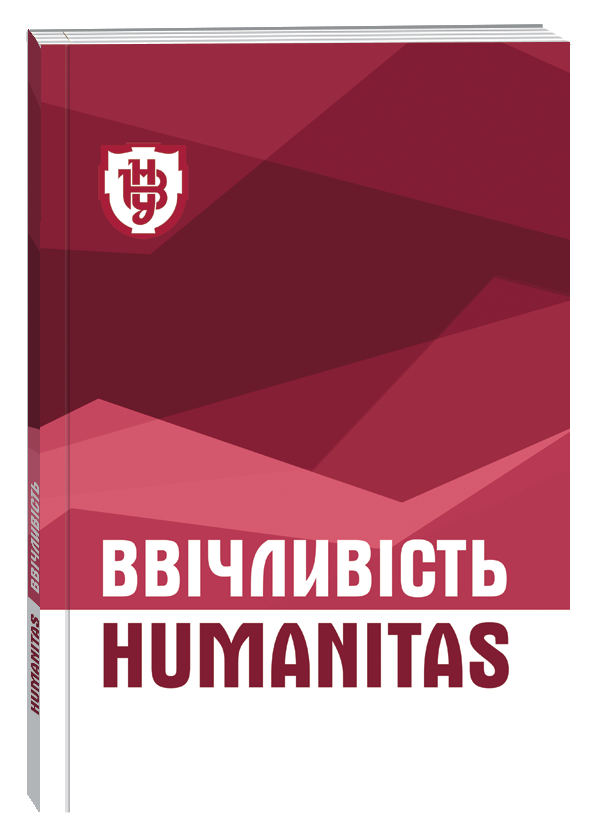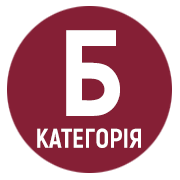ONLINE CHILD SEXUAL ABUSE AS THE DIGITAL CHALLENGE NOWADAYS
DOI:
https://doi.org/10.32782/humanitas/2022.2.1Keywords:
children, sexual abuse, sexual exploitation, internet, online child sexual abuse, child protection.Abstract
The Internet and information and communication technologies have increased the potential impact of existing forms of violence, abuse and exploitation against children, among which sexual abuse is of particular concern. The need to comply with quarantine restrictions in connection with the COVID-19 pandemic has exacerbated the issue of child safety in the digital space. This publication is the first search component of a broader study of strategies to combat online child sexual abuse. The purpose of the work is to determine the meaning of the concept of online child sexual abuse and to characterize its forms. The research included a review, analysis and comparison of foreign and national scientific publications on the protection of children from online sexual abuse and sexual exploitation combined with analysis of international and national strategic documents as well as standards and recommendations in a particular area. Differences in the state of development of the subject of our research in Ukraine and abroad have been witnessed. A number of concepts that refer to online child sexual abuse and sexual exploitation on the Internet and are used internationally have been considered and have been compared with the legal definitions of sexual crimes against children in Ukraine as well as terms that have become widespread in scientific and practical vocabulary. The findings suggest that there is no consensus on the use of terminology related to online child sexual abuse, which creates significant problems for the development of legislation, policy formulation and implementation, prevention and control programs, data collection and evaluation, and inter-agency cooperation. Our own definition of the concept of «online child sexual abuse» arises at the intersection of such phenomena as violence, sexual violence, and violence on the Internet. The types of online child sexual exploitation and sexual abuse have been described. The main forms of online child sexual abuse have been identified, which include: access to age-inappropriate content (explicit or offensive); reputation damage as a result of the publication of personal and intimate material (in the public domain or in private correspondence); threats of breach of confidentiality, blackmail and exploitation; unacceptable contact with the threat of harm in real life. Harmonization of terms and definitions in the field of combating online child sexual exploitation and sexual abuse is a prerequisite for bringing Ukrainian legislation closer to international standards for child protection from violence.
References
Запобігання та протидія сексуальній експлуатації та насильству щодо дітей (СЕНД). Типова державна система реагування. WePROTECT Global Alliance. 2016. 46 с.
Захист дітей у цифровому середовищі: рекомендації для індустрій / МСЕ ; переклад за ініціативи Міністерства цифрової трансформації України громадською організацією «МІНЗМІН», 2020. 72 с.
Касілова А. Рекомендації щодо онлайн-безпеки для педагогічних працівників : #stop_sexтинг, 2020. 34 с.
Кочарян А. Б., Гущина Н. І. Виховання культури користувача Інтернету. Безпека у всесвітній мережі : навчально-методичний посібник. Київ, 2011. 100 с.
Куріння, вживання алкоголю та наркотичних речовин серед підлітків, які навчаються: поширення й тенденції в Україні : за результатами дослідження 2019 року в рамках міжнародного проекту «Європейське опитування учнів щодо вживання алкоголю та інших наркотичних речовин – ESPAD» / О. М. Балакірєва та ін. Київ : ТОВ «ОБНОВА КОМПАНІ», 2019. 214 с.
Лубенець І. Г. Сексуальне насильство щодо дітей у цифровому середовищі: стан, тенденції, шляхи запобігання. Захист дитини від насильства та жорстокого поводження: сучасні виклики : матеріали Міжнар. наук.-практ. конф. (Київ, 3 черв. 2021 р.). Київ : Нац. акад. внутр. справ, 2021. С. 80–85.
Найдьонова Л. А. Цифрові ризики в умовах дистанційної освіти в часи пандемії: Наукова доповідь на методологічному семінарі НАПН України «Актуальні проблеми психологічної протидії негативним інформаційним впливам на особистість в умовах сучасних викликів» 8 квітня 2021 р. Вісник Національної академії педагогічних наук України. 2021. 3(1). DOI: https://doi.org/10.37472/2707-305X-2021-3-1-13-3
Національна стратегія захисту дітей в цифровому середовищі на 2021–2026 роки : проєкт / Міністерство цифрової трансформації України, 2020. URL: https://drive.google.com/file/d/1ftag6UGD4n3DFxTZMyETeL45cFl- SD7p/view (дата звернення: 12.04.2022).
Національна стратегія з захисту дітей в цифровому середовищі на період до 2025 року / Міністерство цифрової трансформації України, 2020. URL: https://drive.google.com/file/d/1w1nrWgnP0Miwb_-SxMU1TPNgZdnrAFU/ view (дата звернення: 13.04.2022).
Пазюк А. В., Черних О. О. Дитина онлайн: як забезпечити безпеку та приватність (аналітичне дослідження). Київ : ВАІТЕ, 2017. 74 с.
Полек Т., Саніна Т., Соболь Ю. Вплив пандемії COVID-19 на щоденні практики дитинства. Київ : Український культурний фонд, 2022. 79 с.
Посібник INSPIRE: дії для впровадження семи стратегій задля припинення насильства стосовно дітей : Одеський Благодійний Фонд «Шлях до дому», 2019. 291 с.
Про внесення змін до деяких законодавчих актів України щодо імплементації Конвенції Ради Європи про захист дітей від сексуальної експлуатації та сексуального насильства (Ланцаротської Конвенції) : Закон України №1256-IX від 18.02.2021. База даних «Законодавство України». URL: https://zakon.rada.gov.ua/laws/ show/1256-20#Text (дата звернення: 13.04.2022).
Про внесення змін до деяких законодавчих актів України щодо протидії булінгу (цькуванню) : Закон України №2657-19 від 18.12.2018. База даних «Законодавство України». URL: https://zakon.rada.gov.ua/laws/ show/2657-19#Text (дата звернення: 14.04.2022).
Про захист дітей від сексуальної експлуатації та сексуального насильства: Конвенція Ради Європи від 25 жовтня 2007 р.; ратифіковано з заявами Законом України №4988-VI від 20.06.2012. База даних «Законодавство України». URL: https://zakon.rada.gov.ua/laws/show/994_927#Text/ (дата звернення: 13.04.2022).
Про Національну стратегію розбудови безпечного і здорового освітнього середовища у новій українській школі : Указ Президента України від 25.05.2020 №195/2020. База даних «Законодавство України». URL: https://zakon.rada.gov.ua/laws/show/195/2020#Text (дата звернення: 14.04.2022).
Сексуальне насильство над дітьми та сексуальна експлуатація дітей в Інтернеті в Україні : Аналітичний звіт по результатам кількісного дослідження / Proinsight Lab, 2021. URL: https://nus.org.ua/wp-content/uploads/2021/03/Zvit- Seksualne-nasylstvo-nad-ditmy-ta-seksualna-ekspluatatsiya-ditej-v-Interneti-v-Ukrayini.pdf (дата звернення: 19.04.2022).
Сосніна О. В. Щодо змін до кримінального законодавства України в зв’язку з імплементацією Ланцаротської конвенції. Сучасні напрями розвитку економіки, підприємництва, технологій та їх правового забезпечення: матеріали Міжнародної науково-практичної конференції / відповід. за вип. : проф. Семак Б. Б. Львів : вид-во Львівського торговельно-економічного університету, 2021. 236–238.
Соціальна обумовленість та показники здоров’я підлітків та молоді : за результатами соціологічного дослідження в межах міжнародного проекту «Здоров’я та поведінкові орієнтації учнівської молоді» : моногр. / О. М. Балакірєва, Т. В. Бондар та ін. ; наук. ред. О. М. Балакірєва ; ЮНІСЕФ, ГО «Укр. ін-т соц. дослідж. ім. О. Яременка». Київ : Поліграфічний центр «Фоліант», 2019. 127 с.
Babchishin K. M., Hanson R. K., Hermann C. A. The characteristics of online sex offenders: A meta-analysis. Sexual abuse: a journal of research and treatment. 2011. Vol. 23(1). P. 92–123.
Children and Parents: Media use and Attitudes Report / Ofcom, 2014. London, UK : Ofcom. 233 p.
Children and parents: media use and attitudes report / Ofcom, 2021. London, UK : Ofcom. 51 p.
Enhancing Police and Industry Practice in the Prevention of Online Child Sexual Abuse / Davidson J. et al. EU Child Online Safety Project, 2016. 167 p. DOI: 10.13140/RG.2.2.32666.03523
Kemp S. Digital 2022: Global overview report (26 January 2022). URL: https://datareportal.com/reports/digital- 2022-global-overview-report (дата звернення: 19.04.2022).
Kemp S. Digital 2022: Ukraine (15 February 2022). URL: https://datareportal.com/reports/digital-2022-ukraine (дата звернення: 19.04.2022).
Kopecký K. Cyberbullying and sexting between children and adolescents – comparative study. Procedia – Social and Behavioral Sciences, 2014. Vol. 149. P. 467–471.
Livingstone, S., Haddon, L. Introduction. Kids online: opportunities and risks for children / S. Livingstone and S. Haddon (eds.). Bristol, UK : The Policy Press, 2009. P. 1–6.
Staksrud E., Livingstone S. Children and online risk: powerless victims or resourceful participants? Information, communication and society, 2009. Vol. 12 (3). P. 364–387.
Terminology Guidelines for the Protection of Children from Sexual Exploitation and Sexual Abuse / Interagency Working Group, 2016. 100 р.
Wachs S., Wolf K. D., Pan C. C. Cybergrooming: Risk factors, coping strategies and associations with cyberbullying. Psicothema. 2012. Vol. 24(4). P. 628–633.
Wells M., Mitchell K. J. Patterns of internet use and risk of online victimisation for youth with and without disabilities. Journal of Special Education, 2014. Vol. 48(3). P. 204–213. DOI: 10.1177/0022466913479141
World report on violence and health / Krug E. G. et al., eds. Geneva : World Health Organization, 2002. 346 p.
Young people’s experiences of online sexual harassment : Executive Summary. A cross-country report from Project deSHAME / Project deSHAME (Childnet, Kek Vonal, Save the Children Denmark, UCLan), 2017. 8 p.







